While the official coins of the late Republic were still minted under the control of the moneyers, it became more and more common practice for imperators to coin their own money to pay their troops and for propaganda purposes.
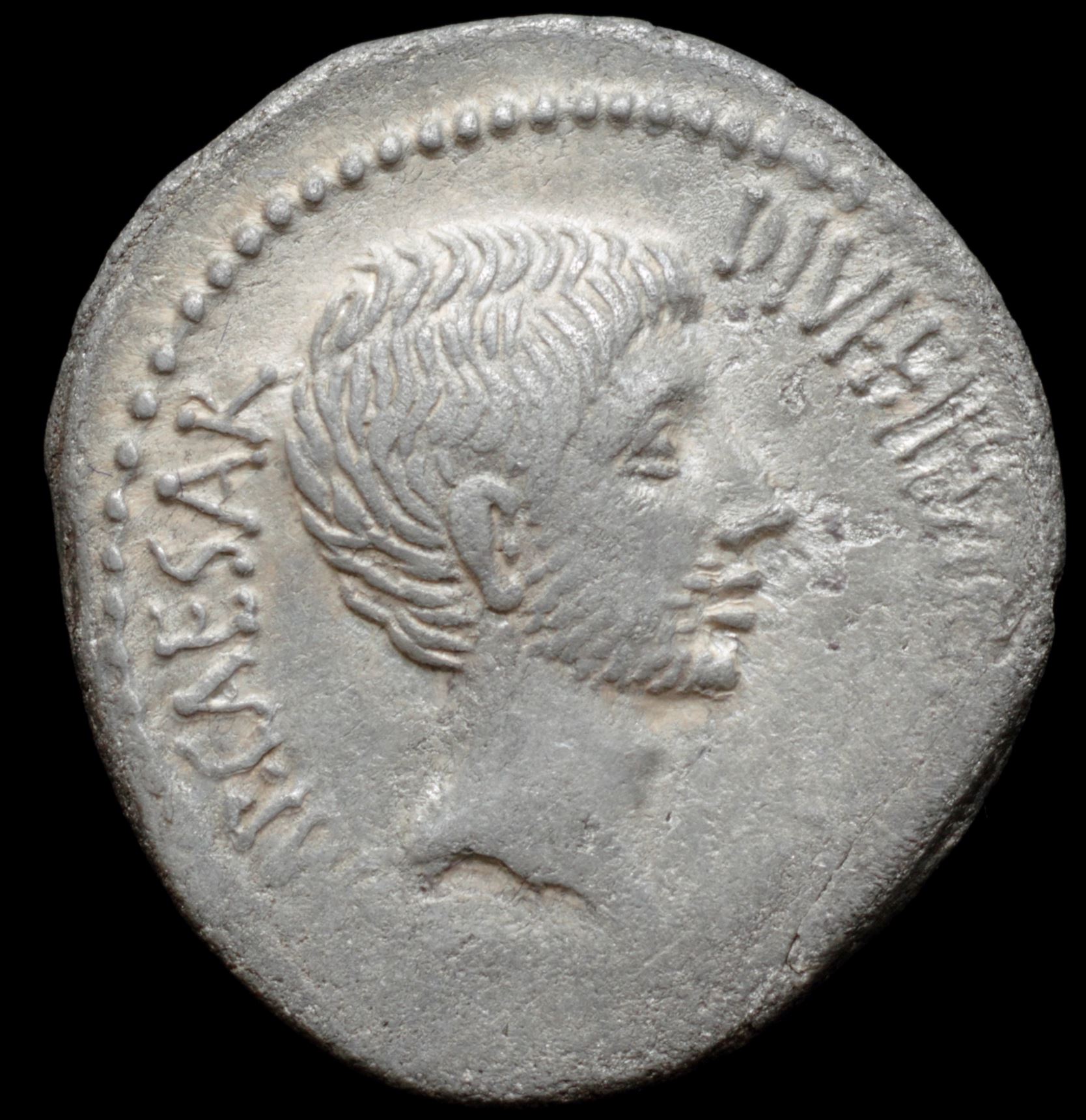
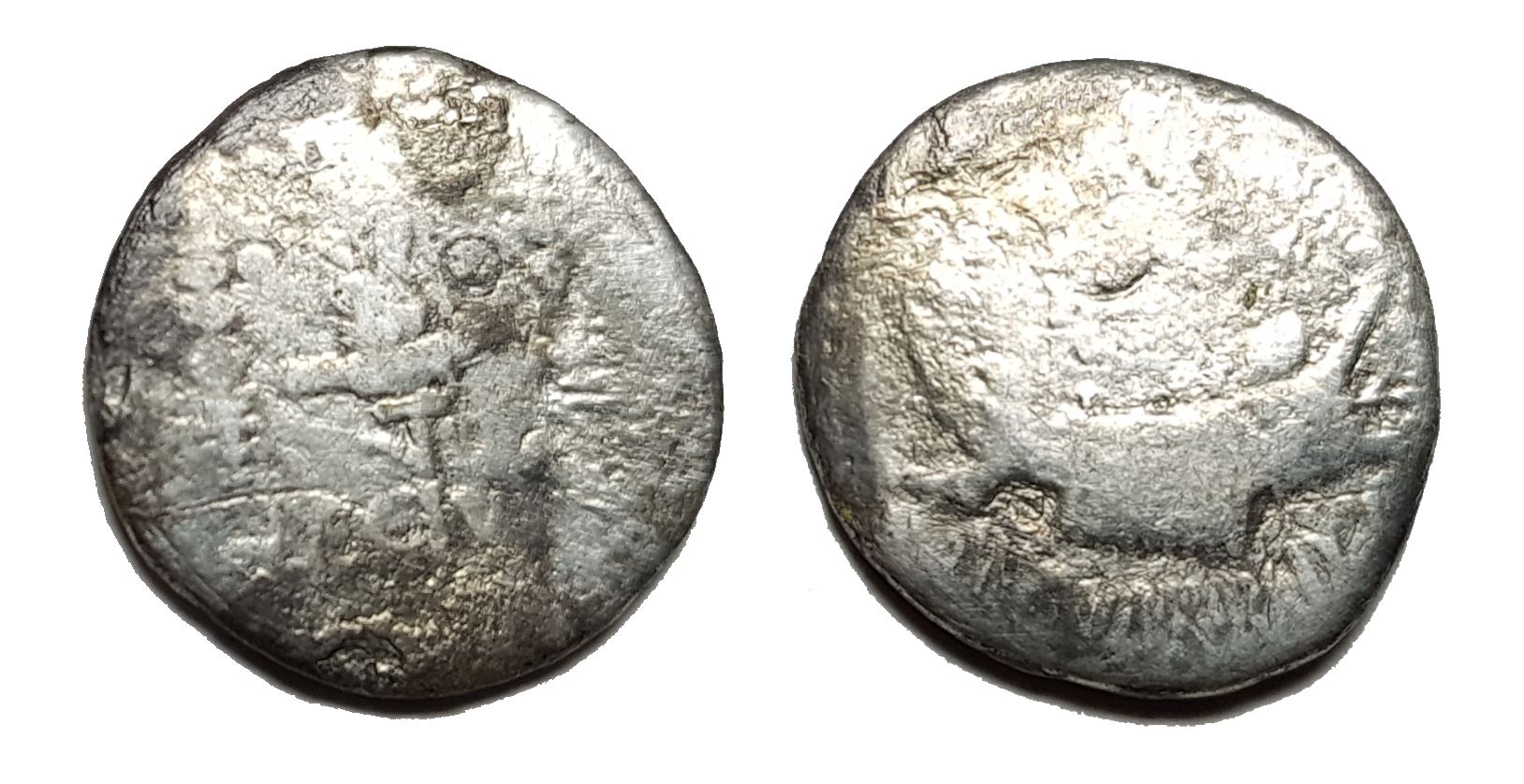
Reverse: LEG V
Die Orientation: -
Weight: 2.73 g
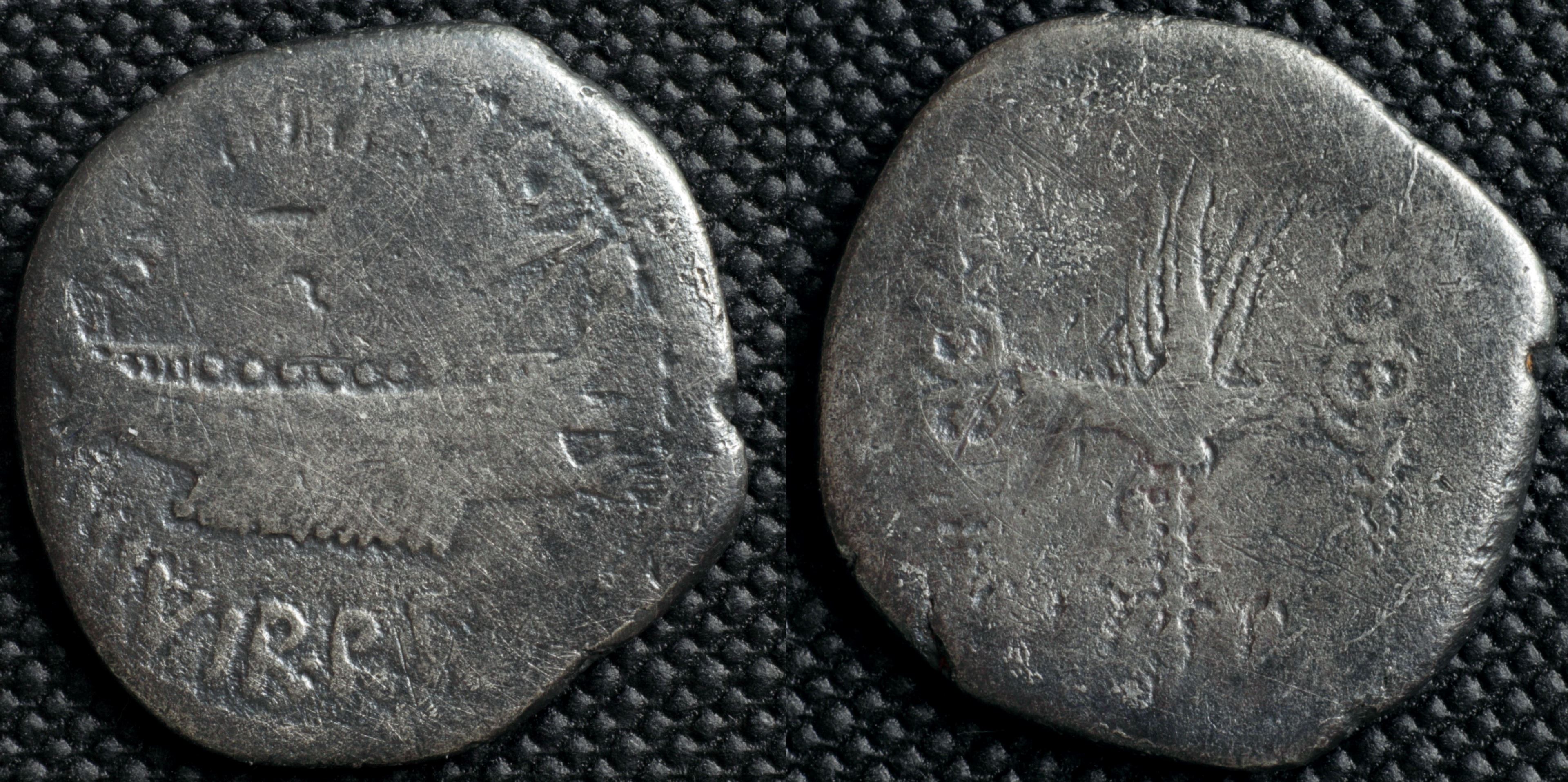
Reverse: legionary aquila between two standards, LEG X?
Die Orientation: -
Weight: 3 g
moving mint in Greece (maybe Patrae?)
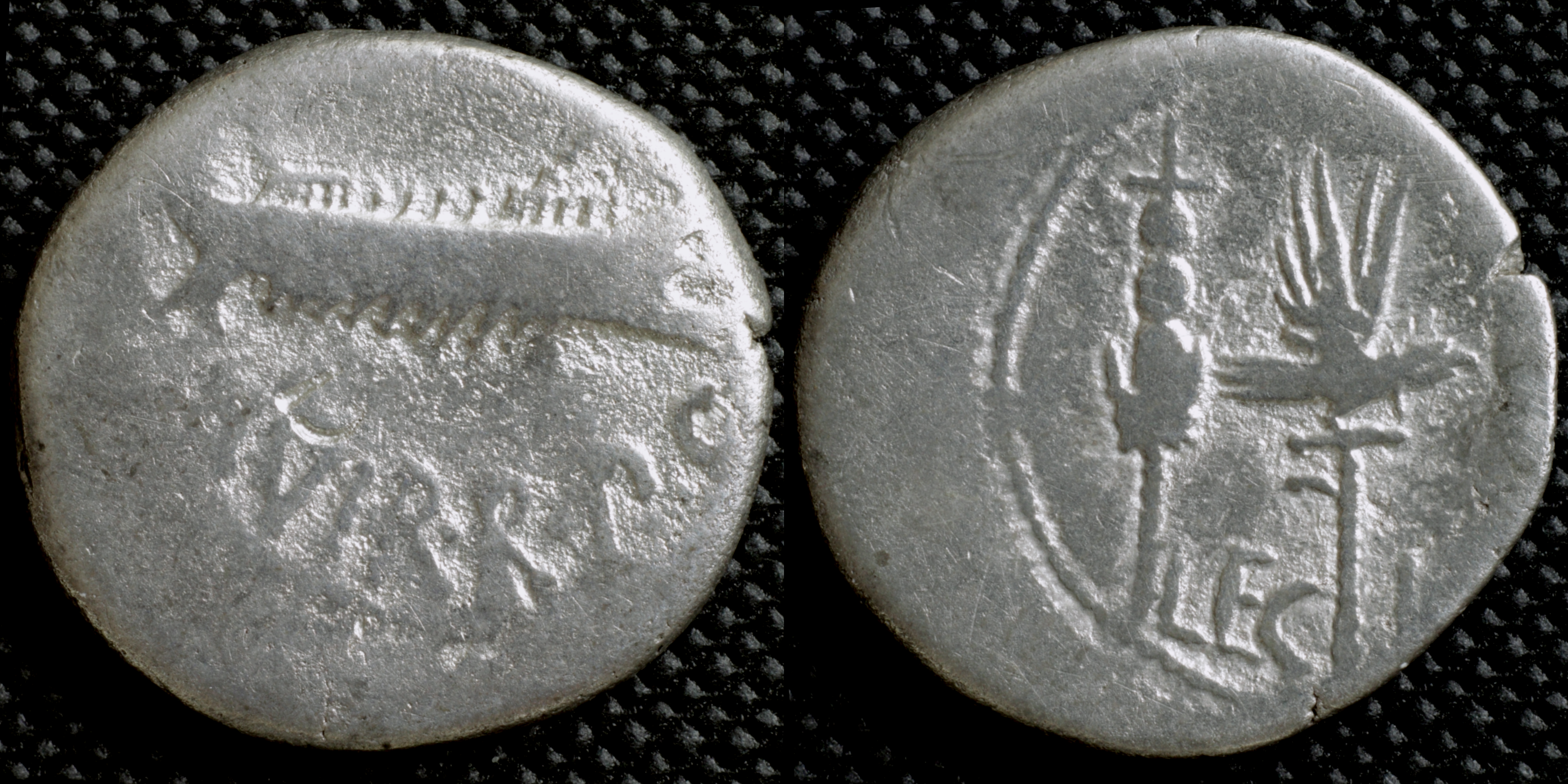
Reverse: legionary aquila between two standards, LEG_II ?
Die Orientation: -
Weight: 3.6 g
moving mint in Greece (maybe Patrae?)
.jpg)
Reverse: Aquila (eagle) between two standards; around, LEG XVII CLASSICAE
Die Orientation: -
Weight: 3.27 g
Quality VF-F
.jpg)
Reverse: LEG V; Legionary eagle between two standards
Die Orientation: 6 H
Weight: 3.7 g
.png)
Reverse: ANTONIVS/AVG • IMP • III in two lines.
Die Orientation: 5 H
Weight: 3.84 g
"The carefully concealed letter "P" behind the ear of Antony's portrait represents the only known example of an artist's signature on a Roman Republican coin. The letter went unnoticed by numismatists for centuries before it was recognized in the early decades of the twentieth century."
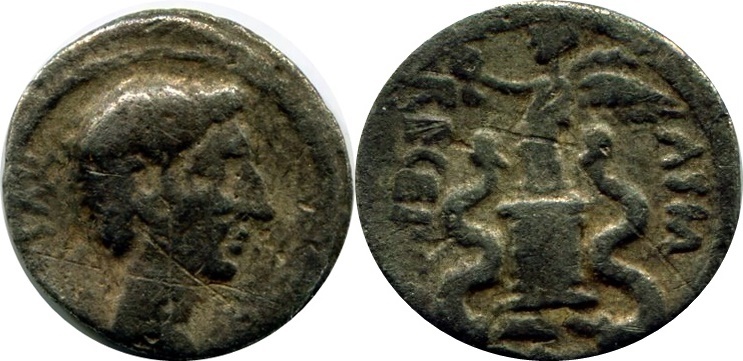
Reverse: ASIA RECEPTA – Victory draped, standing looking left, holding wreath in right hand. On cista mystica between two snakes
Die Orientation: 0 H
Weight: 1.45 g
This issue was struck to commemorate that the province of Asia had accepted Octavian's victory over Marcus Antonius in 30 BC. But where Aegyptus was a client kingdom, and therefore could be captured per se, Asia was a veteran province already, so the regular CAPTA reverse was probably deemed unsuitable, and the RECEPTA reverse was used instead.
.png)
Reverse: ASIA RECEPTA, Victory standing facing left, holding wreath and palm, on top of cista mystica, serpents at left and right
Die Orientation: 1 H
Weight: 1.66 g
RSC has this to say:
"The subjection of the Province of Asia occurred in B.C. 30."
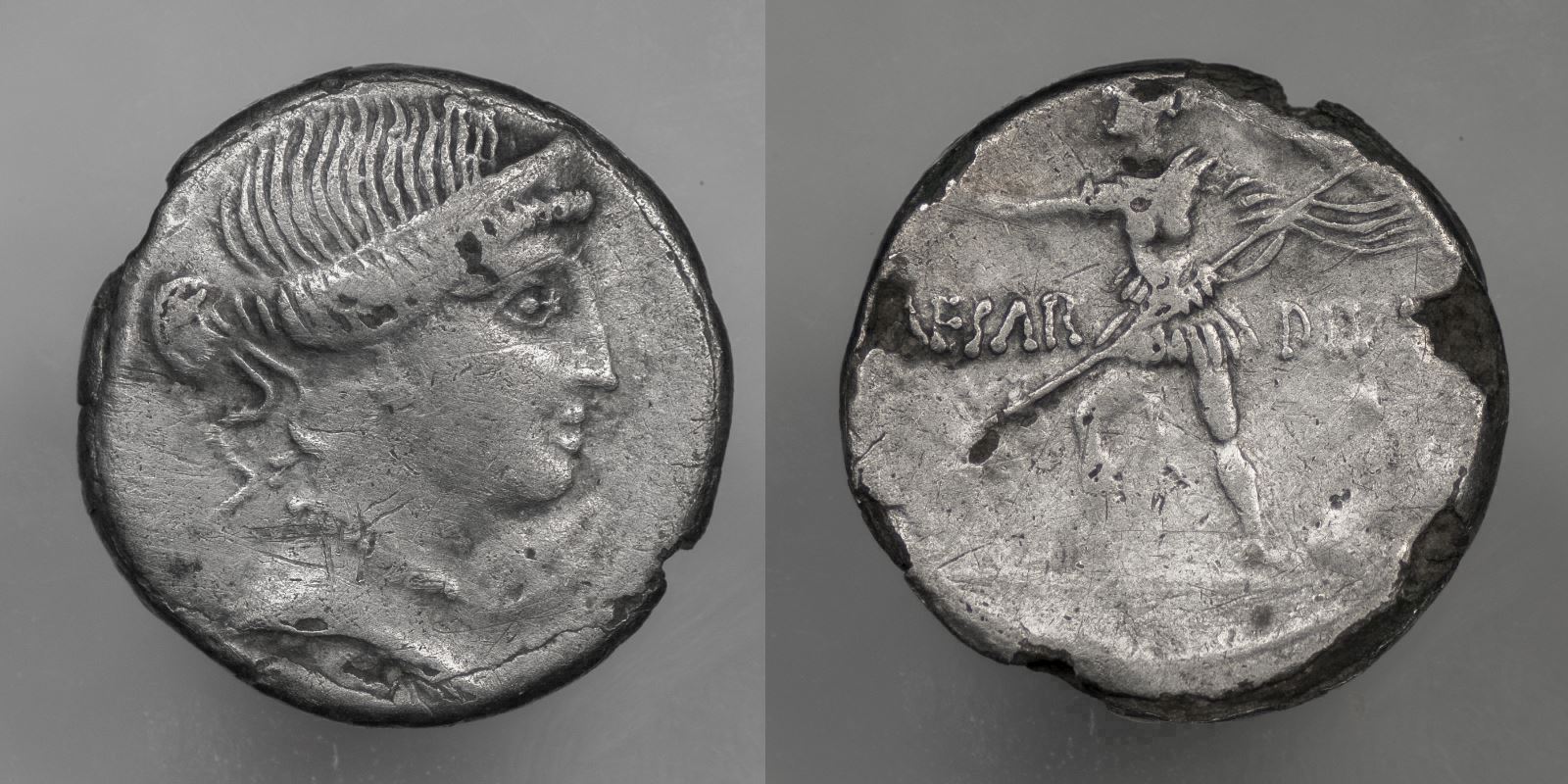
Reverse: CAESAR DIVI F, Octavian in military dress, cloak flying behind, advancing left, right arm extended, left hand holding transverse spear
Die Orientation: 6 H
Weight: 2.54 g
The below quote from forumancientcoins.com puts the coin in context:
"In July 32 B.C., Octavian illegally obtained Antony's will and exposed it to the Roman public: it promised substantial legacies to Antony's children by Cleopatra and left instructions for shipping his body to Alexandria for burial. Rome was outraged, and the Senate declared war against Cleopatra (an important distinction, because Octavian did not want the Roman people to consider it a civil war). Octavian's forces decisively defeated the forces of Antony and Cleopatra at the Battle of Actium in Greece in September 31 B.C. In 30 B.C., Octavian chased Antony and Cleopatra to Egypt where they committed suicide. Octavian became master of the Roman world."
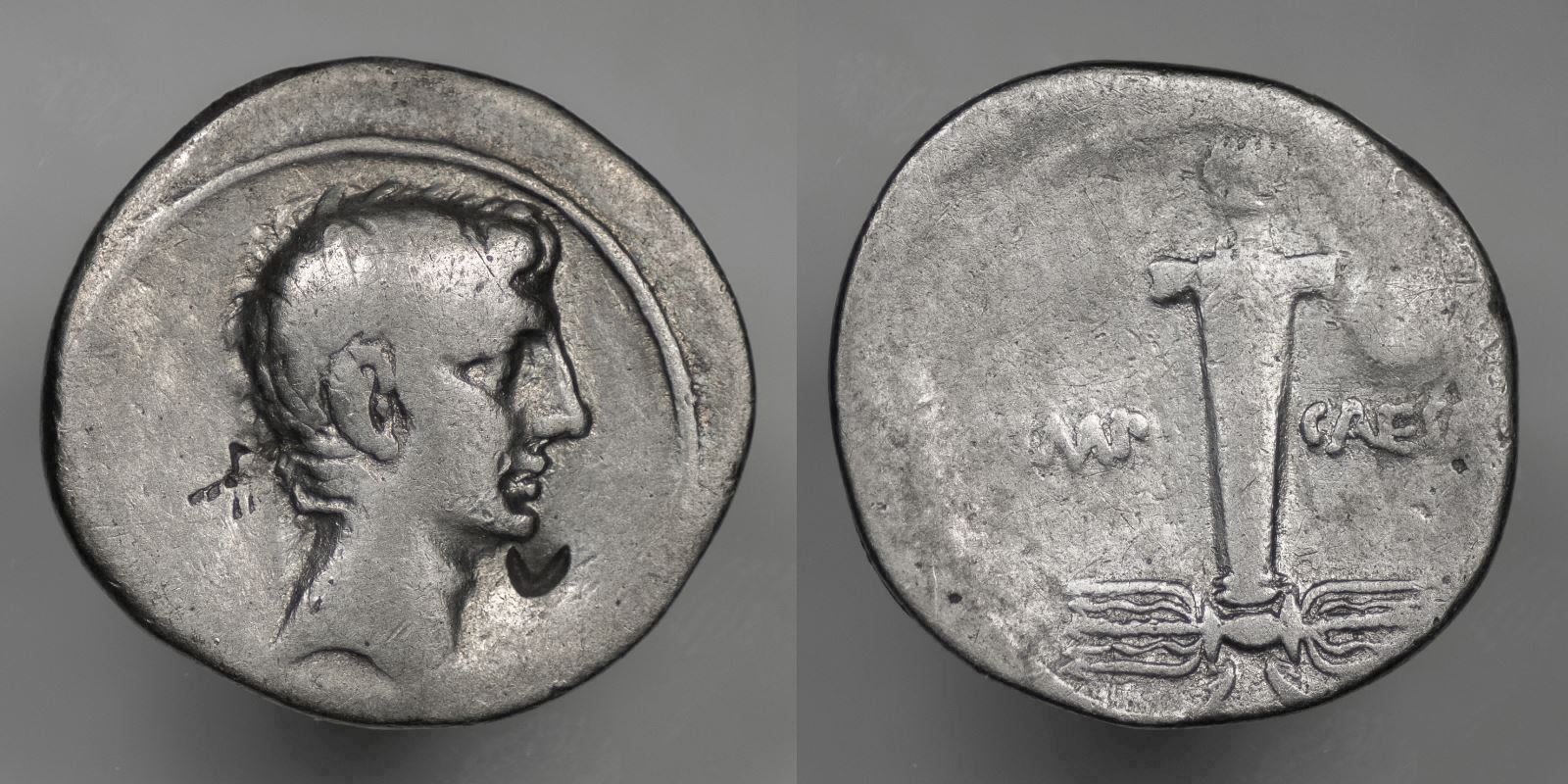
Reverse: IMP CAESAR, Facing head of Octavian on ithyphallic boundary stone of Jupiter Terminus, winged thunderbolt below
Die Orientation: 5 H
Weight: 3.53 g
Uncertain mint in Italy, maybe Rome or Brundisium per RIC.
The following quote from forumancientcoins.com puts this coin in context:
"this propaganda referred to Octavian's re-establishment of boundaries in the east after the battle of Actium and review of the client kingdoms established by Marc Antony (in particular return of Roman territory from Cleopatra and her children)"
.jpg)
Reverse: IMP CAESAR, A naval and military trophy consisting of the weapons and armor of a defeated enemy on a tree trunk on top of a prow of a captured galley with crossed anchor and rudder
Die Orientation: 1 H
Weight: 3.71 g
Arranged around its base were additional arms and sometimes bound captives. Here, in place of the additional arms and/or captives the trophy sits on the beak (rostrum) of an enemy warship with a rudder and anchor at its base.
This denarius was part of a series of aurei and denarii that were struck between the autumn of 30 BC and 29 BC and which conveyed a general message of victory and re-foundation.
Sear associated this denarius with a contemporary aureus showing on its reverse a similar trophy housed in a tetrastyle temple decorated with a triskeles in its pediment. The obverse of that coin, a bust of Diana Siciliensis, led him to argue that the aureus commemorated Octavian's important victory over Sextus Pompey at the Battle of Naulochus in 36 BC.
The reverse of this denarius, however, does not specify a particular victor. The most likely possibility is that it commemorates Agrippa's victory over Antony and Cleopatra at Actium the previous September, the final triumph for Octavian, the undisputed master of the Roman Empire."
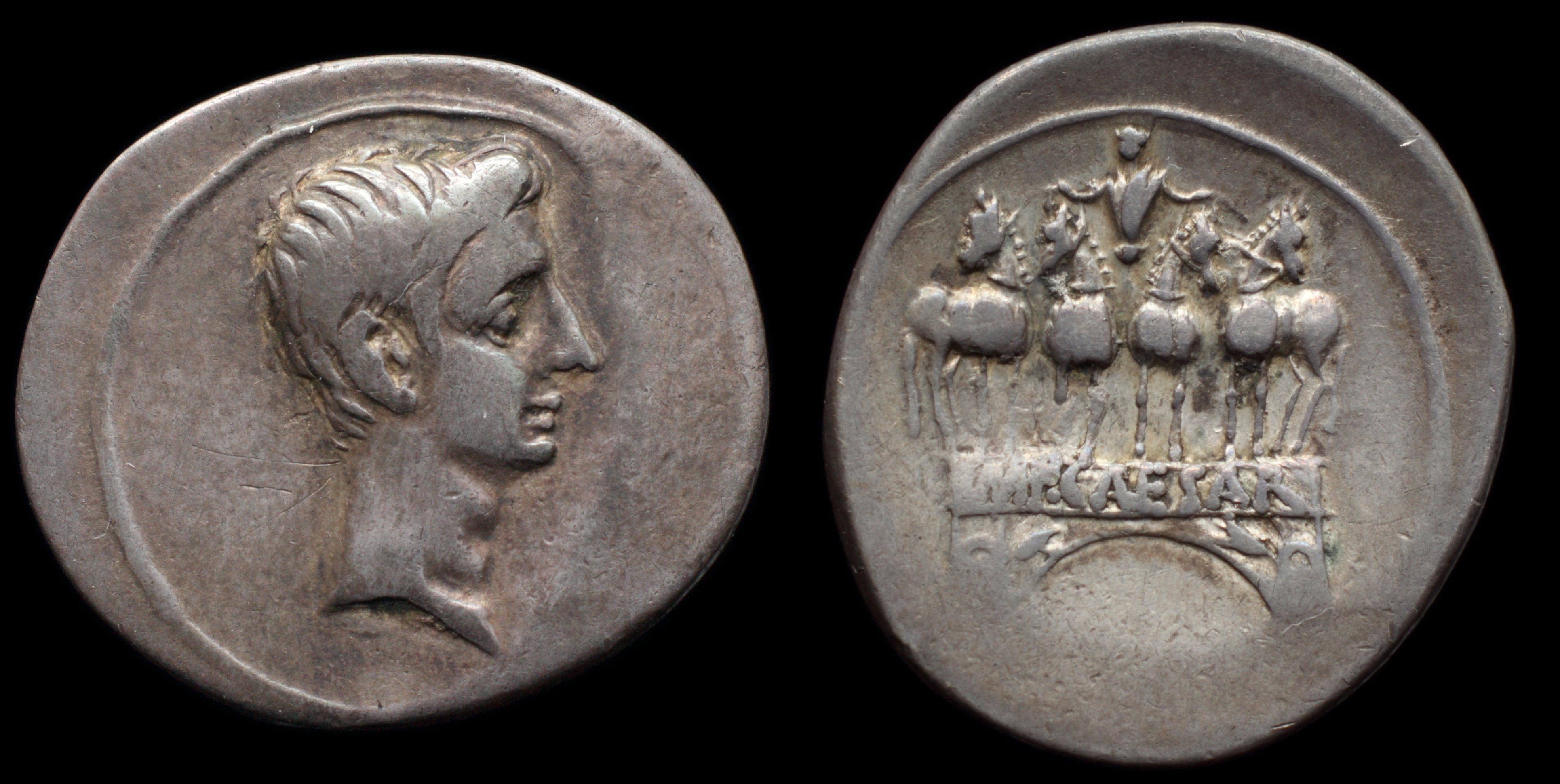
Reverse: Octavian’s Actian arch surmounted by large statue of Octavian in facing triumphal quadriga; IMP·CAESAR
Die Orientation: -
Weight: 3.8 g
